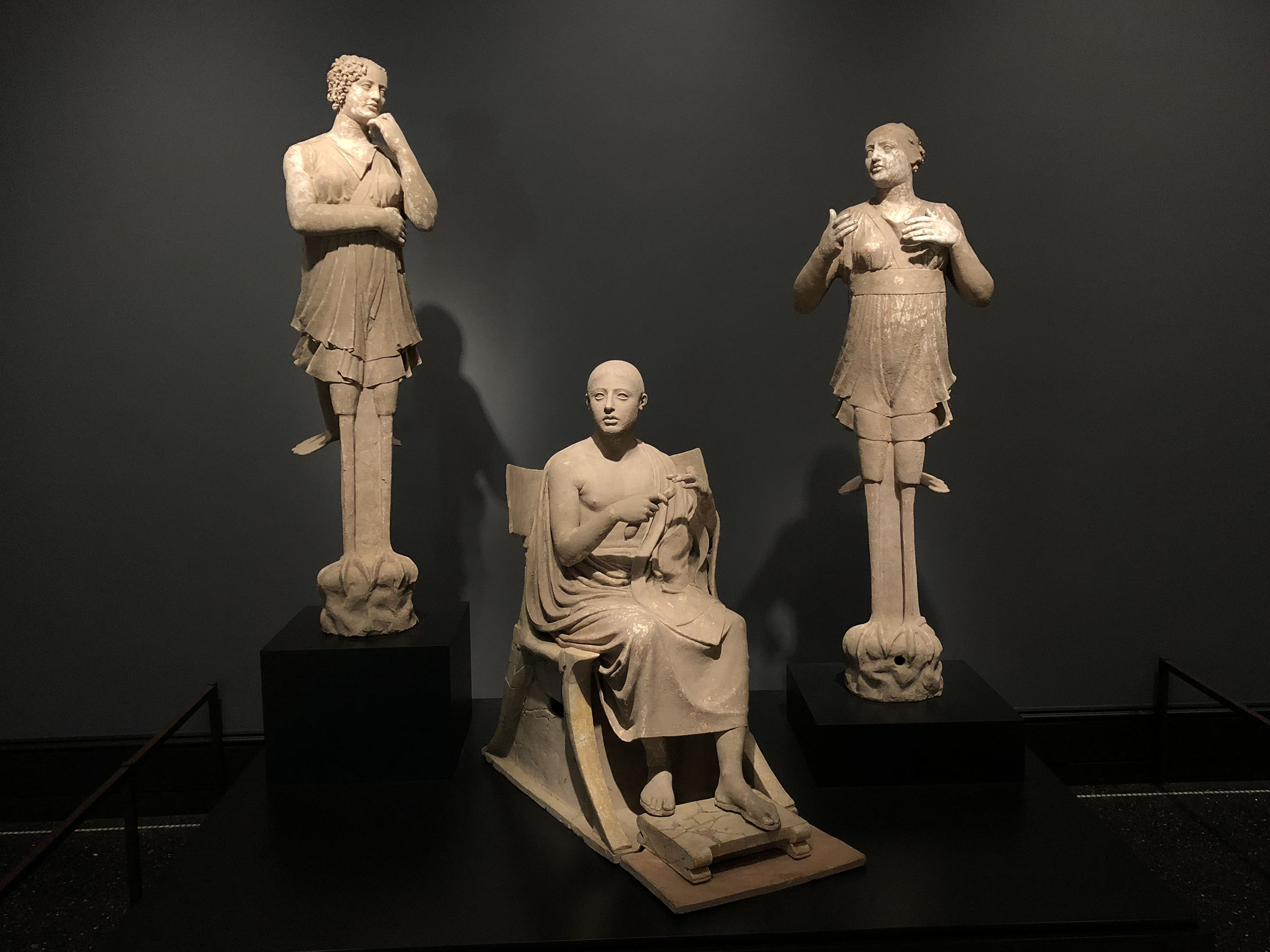Getty's Great "Poet and Sirens" Is Returning to Italy
 |
| Sculptural Group of a Seated Poet and Sirens, 350–300 BC, as installed at Getty Villa |
The Getty Museum will return an important Tarantine Greek terracotta Sculptural Group of a Seated Poet and Sirens to Italy. The Manhattan District Attorney's antiquities trafficking unit supplied information indicating that the near-life-size sculptures had been illegally excavated or exported. The sculptures have already been taken off view at the Villa.
Created in the Greek colonies of late 4th-century BC Italy, Poet (or Orpheus) and Sirens has been one of the few truly great works of Greek sculpture on view in America. Its return constitutes the most significant Getty restitution since the landmark 2007 agreement involving the Morgantina Aphrodite and 46 other objects, many of them world class. The Aphrodite had been dogged by rumors of an illicit origin throughout its relatively short stay in Malibu. The Poet and Sirens have been at the Getty for 46 years, without controversy as far as I know. The press release's mention of the Manhattan DA's office hints at fresh evidence from long-ago traffickers—a cold case turned hot.
According to the Getty collection website, the Poet and Sirens was owned by Bank Leu, Zurich, and sold to the museum in 1976. Bank Leu was Switzerland's oldest, but it became embroiled in insider trading scandals in the 1980s.
Four lesser objects, none of which have been on view, are also being returned to Italy. They include a Colossal Head of a Divinity bought from Robin Symes (the guy who sold the Euphronios Krater to the Met); an Etruscan bronze thymiaterium from the Fleischman collection (not the first return from that $60 million gift/purchase); a stone mold for casting pendants donated in part by Bruce McNall (Beverly Hills coin dealer/Los Angeles Kings owner who became enmeshed in Jirí Frel's tax evasion scam).
Also being returned is a supremely awful 19th-century oil painting, Oracle at Delphi, by the little-known Camillo Miola. It's one of a group of academic paintings of imagined antiquity that appealed to J. Paul Getty. The Getty website traces the provenance to Naples' Pinacoteca Provinciale in 1880, the year of its creation. Nearly a century later (1972) the Oracle was auctioned in New York and flipped to the Getty Museum the same year. Research by a Getty curator showed that the painting had been removed from the Naples museum for safekeeping during World War II and was never returned. |
| Camillo Miola, Oracle at Delphi, 1881 |
Comments
I keep that in mind when the Victoria & Albert right now is hemming and hawing about returning to LACMA's pre-1965 home a bit of Hollywood movie junk/memorabilia.
Talk about the nerve of some people. Humpf.
Yes, his figure painting is hapless. Although, I don't hate his background effect; Miola could have made a decent decorator, I suppose.
That way of critiquing things will reach a peak when the Lucas museum opens.
... Why is the Getty cooperating with a DA who does not have legal jurisdiction in LA or CA?
... Why does the Manhattan DA have a large unit investigating the antiquities trade? Aren't there more pressing crimes to adjudicate, like murder and financial fraud?
Deed theft has become a growing problem in NYC, but there's no special unit to investigate that.
Or what about the financial crimes of the Trump Organization? The Manhattan DA has already dropped two investigations.
The Atlantic referred to the special unit as the Tomb Raiders of the Upper East Side. The mockery is well deserved.